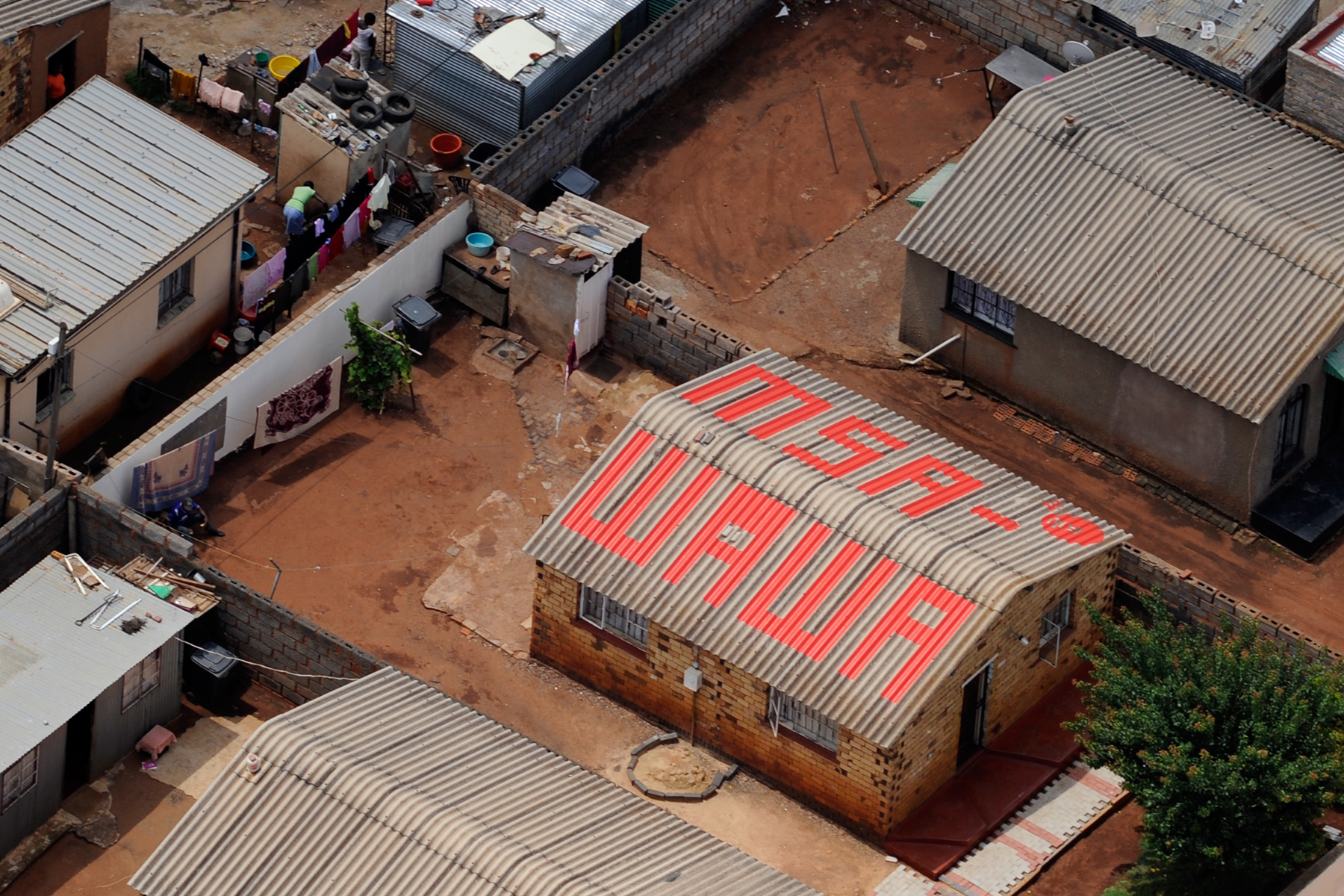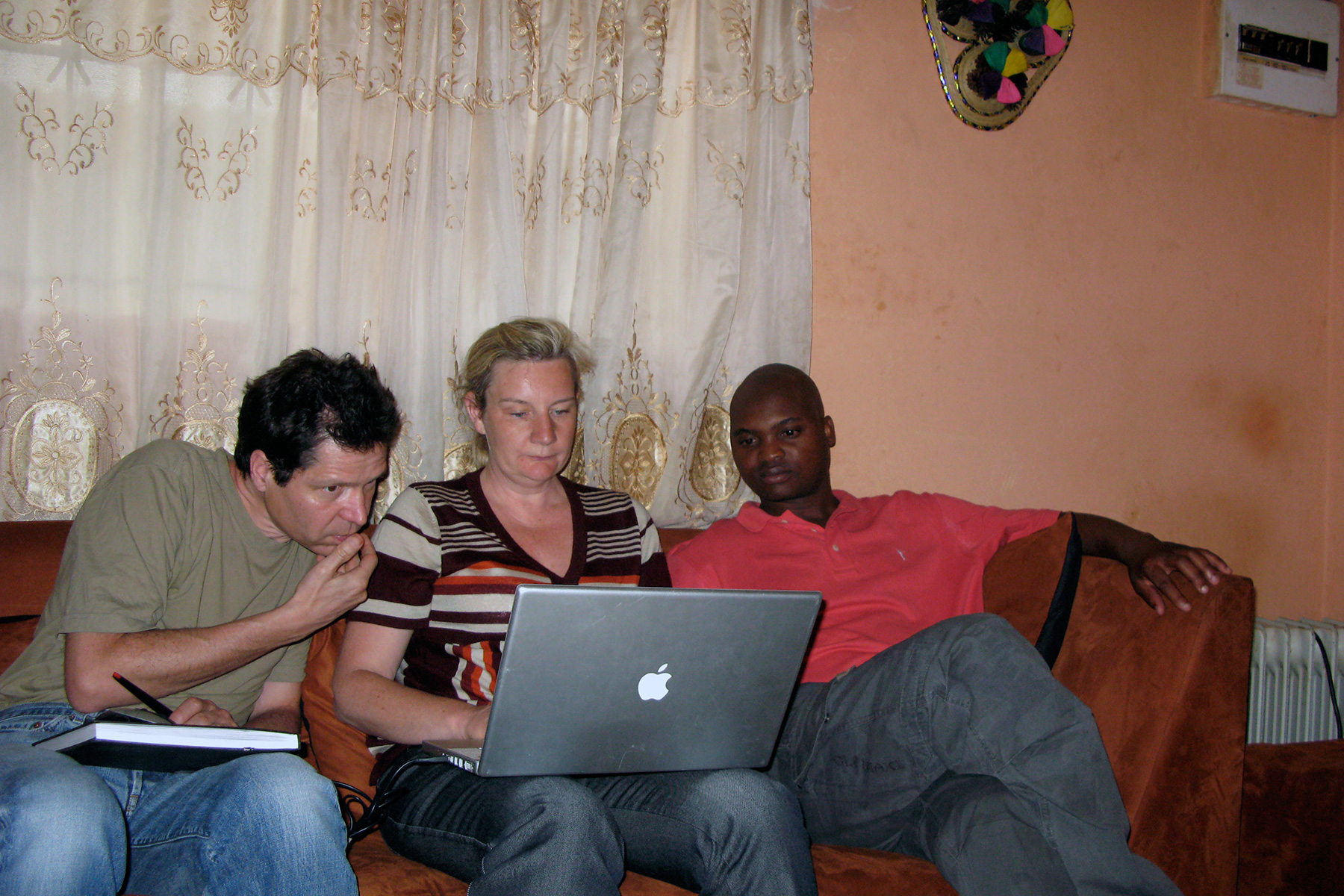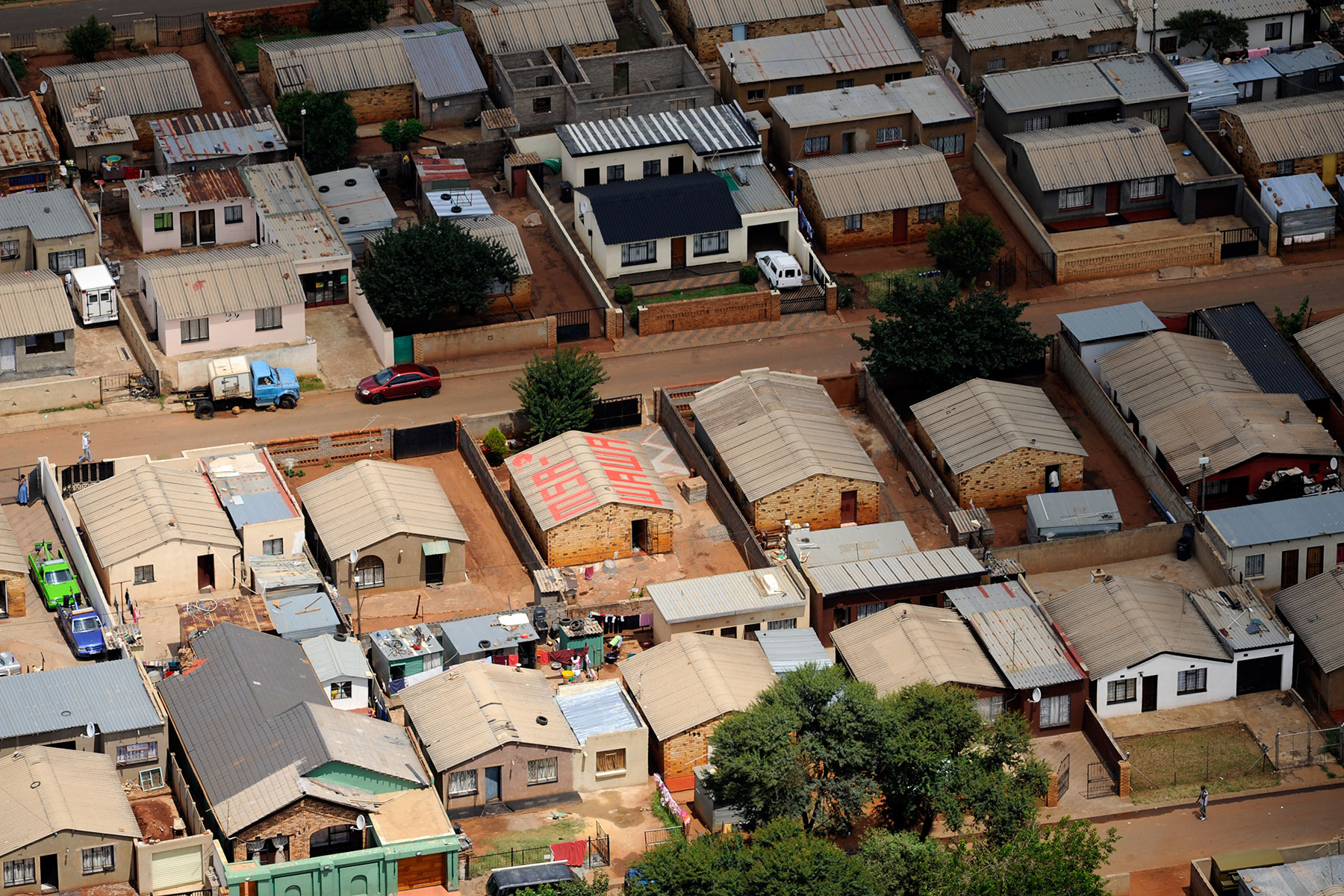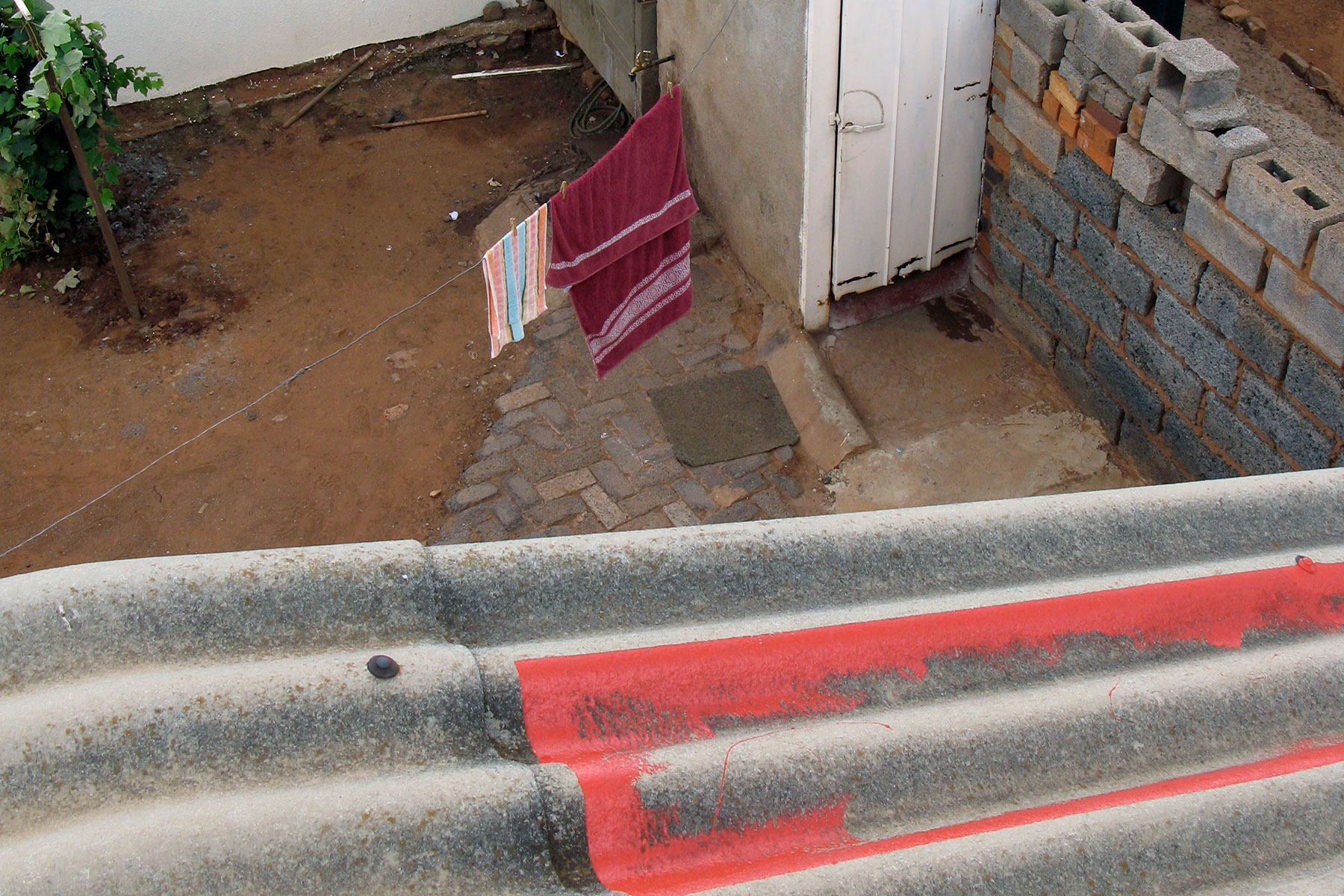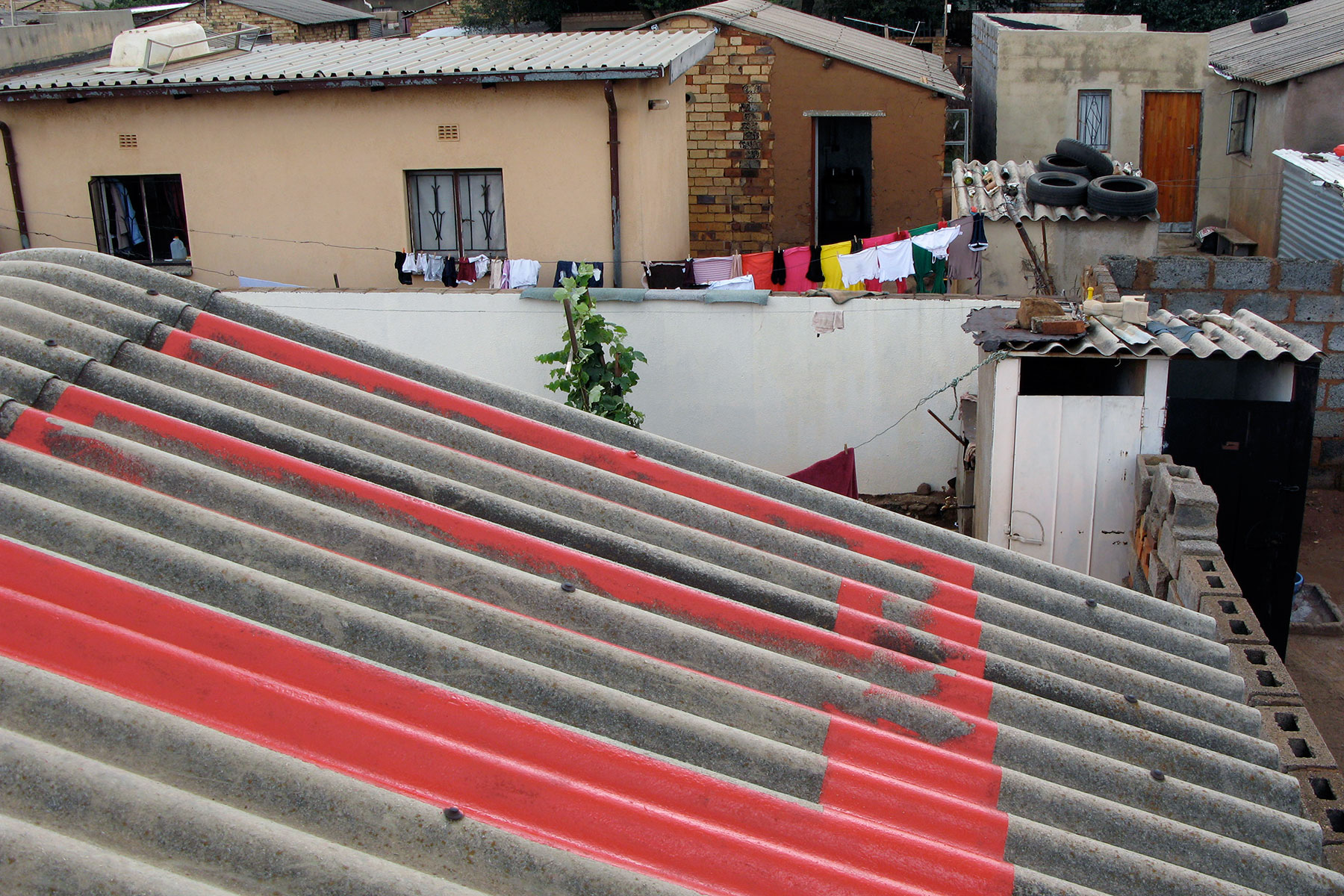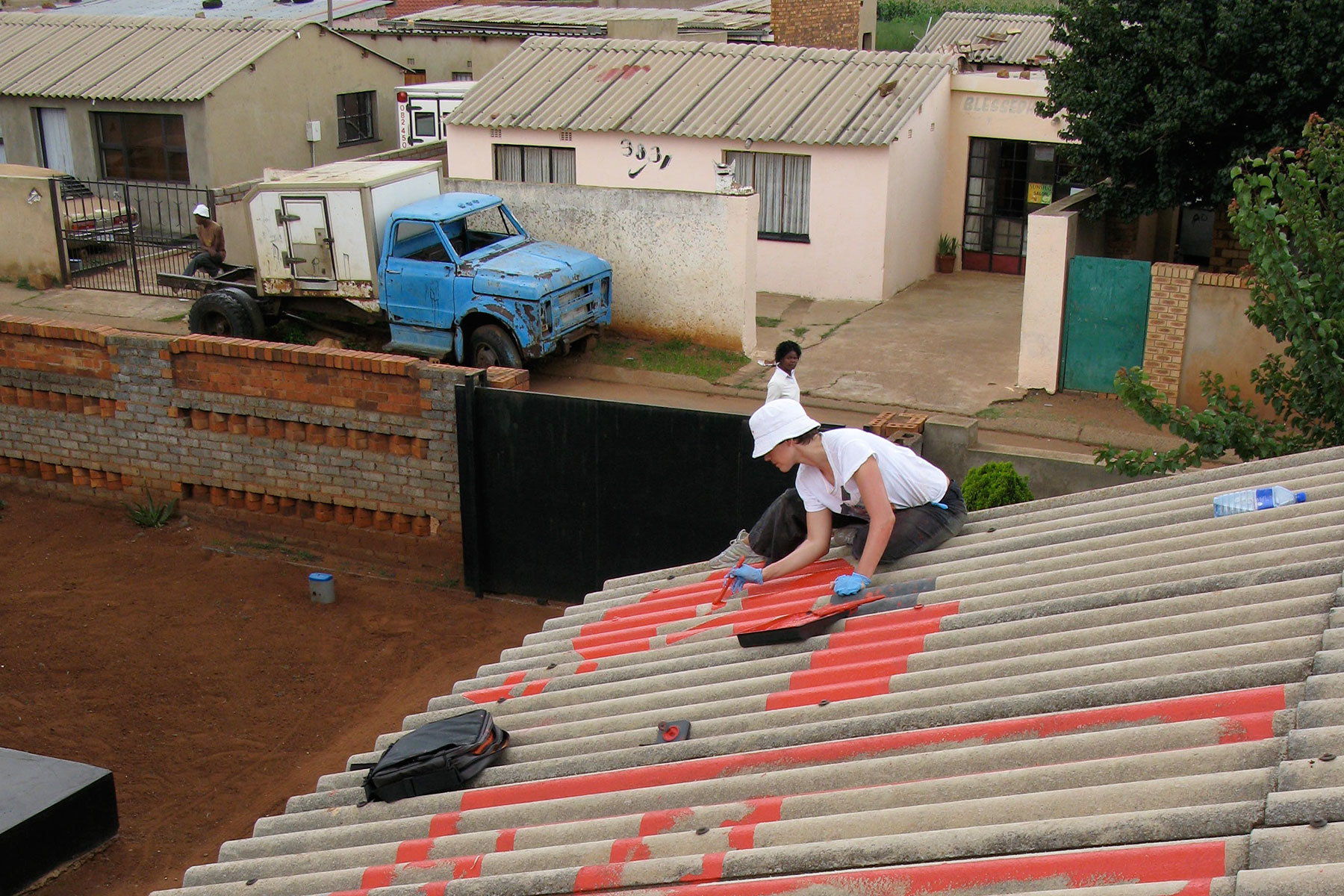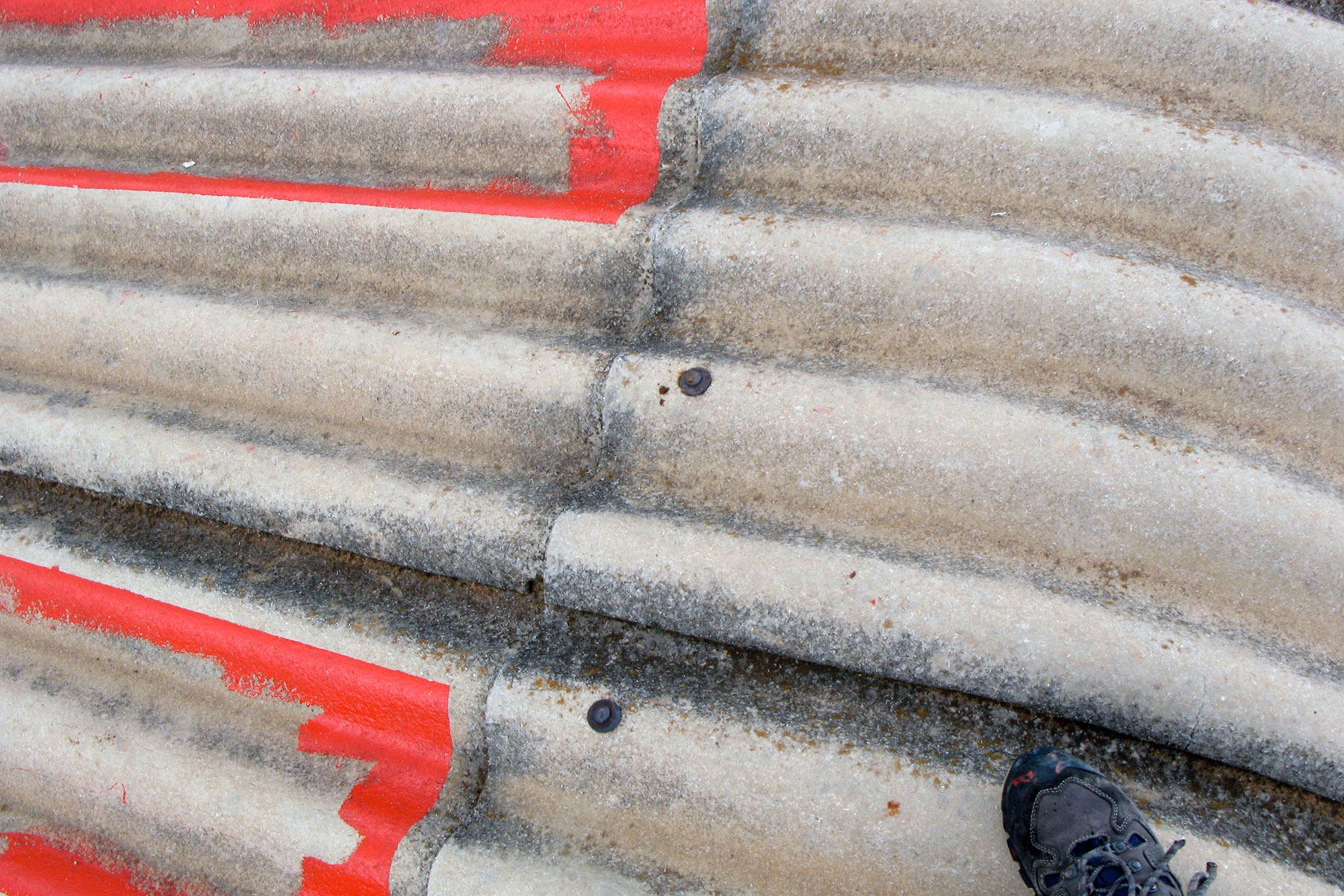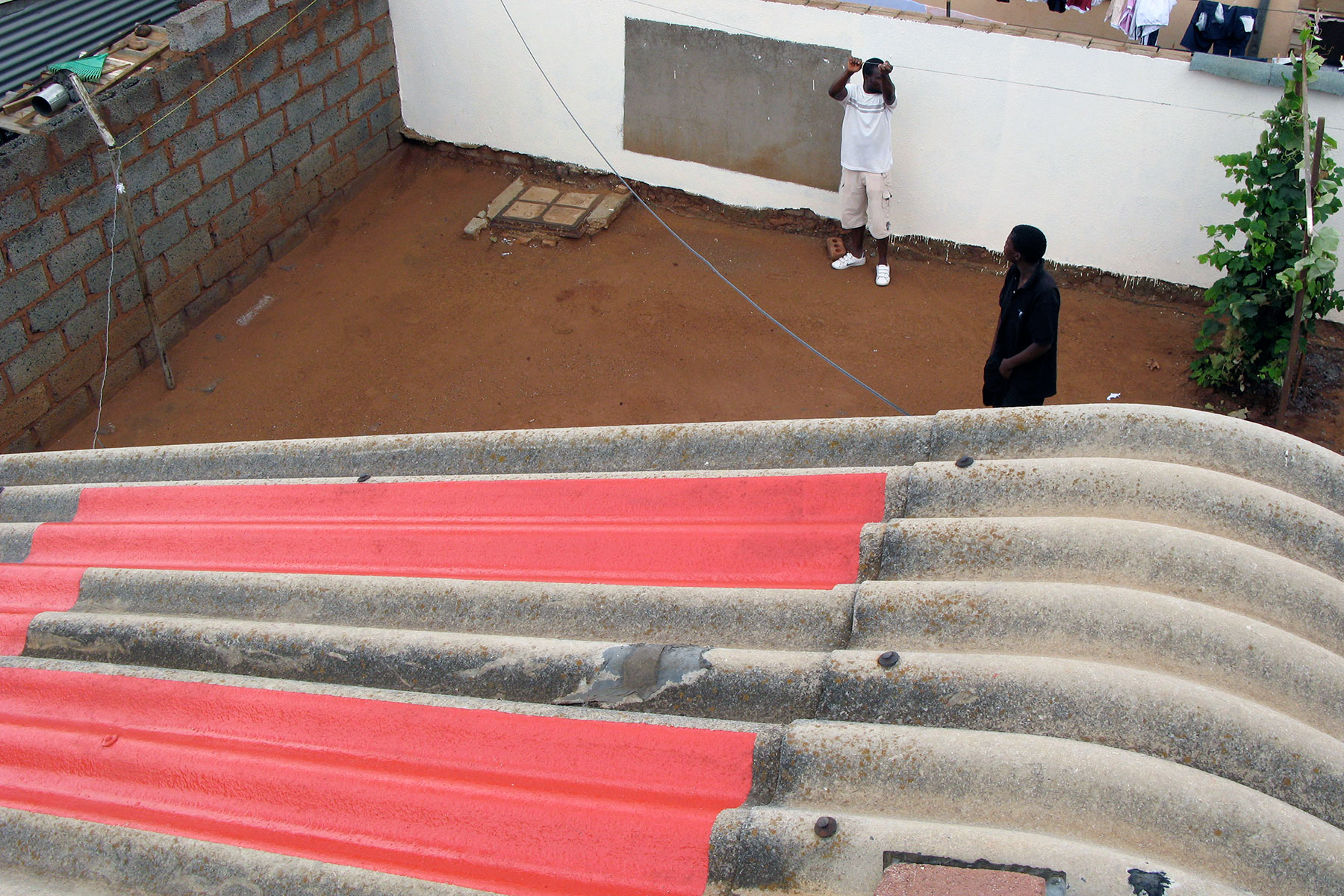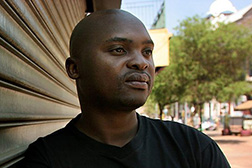The house of the writer Niq Mhlongo in Soweto was inscribed with the word MSAWAWA (Tsotsitaal). It is a word only used and understood within the township making it a pet name for the township. At the same time it means “at home”.
Installed | Location | GPS: 14-02-2009 | Private home of Niq Mhlongo, Soweto, South Africa | -26.2887431,27.8607648
Author | Words | Cuartor: Niq Mhlongo | MSAWAWA | Indra Wussow, Sylt Foundation
Roof Size | Font Size: 56qm | 2,5m x 7m
On Air: –
Interview
MSAWAWA – ARTMIGRATION – MABONENG | Niq Mhlongo and Indra Wussow, Soweto 2009
MSAWAWA
REMOTEWORDS: Niq, what does MSAWAWA mean and where does it derives from?
Niq Mhlongo: MSAWAWA is a nickname that has been given to Soweto and it simply means Soweto. What happens here in South Africa: we have a way of calling things – of naming things and places. I don’t know how it originates. For example we call traffic lights ROBOTS here. So we Sowetans call the endearment of Soweto MSAWAWA. When you want to feel like “This is my Soweto” you will call it MSAWAWA.
REMOTEWORDS: So is it also an explanation that is filled with pride?
Niq Mhlongo: Yes, exactly, pride and also in the sense of belonging. So if I go out of Soweto, go out of the township not many people say: Oh you’re from MSAWAWA. So many things here in South Africa are associated with Soweto. In terms of music in terms of dress up people are looking to Soweto. If someone wants to be accepted among people they look into how Soweto is dressed. Even the things we see in TV for example the Kwaito groups are encouraged by Soweto. It’s all about that these people are associated with trends and with modern life.
REMOTEWORDS: So, MSAWAWA on your roof is indicating Soweto from the air like on a map. Secondly MSAWAWA is a message of pride being send from Soweto into the world. Has pride and self consciousness been important for the liberation of South Africa after the terrible years of apartheid?
Niq Mhlongo: Yes, that’s why I like it so much, because it captures almost everything about arts, politics, economics, every sphere of South African life. As I said, Soweto is also a trendsetter in terms of politics. You know about the events of 1976. It happened in Soweto. It is the birthplace of the liberation fight. The rest of the country followed the message of black consciousness. Most of the political leaders are still from Soweto.
REMOTEWORDS: That brings me to our next message. ARTMIGRATION on the roof of the jozi art:lab located in the suburb of Melville. Can you please tell us about the migration of the people from Melville to other parts of the city.
ARTMIGRATION
REMOTEWORDS: Niq, ARTMIGRATION on the roof of the jozi art:lab located in the suburb of Melville. Can you please tell us about the migration of the people from Melville to other parts of the city.
Niq Mhlongo: The reason we thought about ATRMIGRATION was first of all what that house in Melville stands for. It stands for arts and the sharing of arts in two countries: Germany and South Africa. The artists are enriching each other because art migrates from this country to your country and the other way round. Melville itself has a very artistic tradition. You will find many artist, writers and other creative’s there. But – Melville is also part of Sophiatown. It was one of the first multicultural townships. Black, white, colored, no matter what race, people lived together.
REMOTEWORDS: Indra you are the founder and artistic director of jozi art:lab. Why did your foundation supported that work?
Indra Wussow: Jozi art:lab enabled this artwork as a wonderful collaboration of a visual artist and a writer, both working together to explore the spirit of Johannesburg and its different districts and suburbs.
What is the idea of a place, how can you express the idea of a place in a short message that will give passers by and connoisseurs both a clue about what makes this city a special one. It is great that REMOTEWORDS and Niq Mhlongo underwent this experience together – three roofs in different spots of the city – the posh suburb of Melville, the difficult and violent district of Doornfontein and at last the writer’s home in Soweto are the places to send out messages into the world. Migration seems to be the key factor of Johannesburg’s history – anytime since the foundation in 1886 people deliberately moved and were moved, constant change seems to be the motor of the city and its people. For foreigners like me the most interesting point is how people have coped with forceful removal and neglection and the constant search for a place in their city.
Niq Mhlongo: Yes and people from Doornfountain brought their own culture to Melville in 1934. For example Marabi Dance, done by both black and white. Today it is the culture of Kwaito


